Release notes for November 2024
Last updated on April 03, 2025
More enhancements to the discoverability of relevant documents
Spend less time on reviewing document results thanks to grouping of similar patent documents …
… and faster access to Reaxys curated information extracted from patents.
Patenting an invention often results in multiple patent documents being published at several stages or at several patent offices. This means that there can be many patents dealing with the same invention. These then belong to the same patent family.
Since Reaxys increased the patent coverage in the past years to 105 patent offices and processed many archives, there has been a large increase in the number of documents. To help you review a document result list quickly, Reaxys is now clustering or grouping patents based on the extended patent family ID from LexisNexis.
When viewing document results, you’ll see that only one patent from a patent family is shown (A), but you can easily access the other family members part of the result list (B) (see screenshot below).
Or you can also view the complete list of patents part of a patent family or by accessing the “Bibliographic Info” (C).
Additionally, the patent that is shown as representative of the family group is the one that has undergone most processing in Reaxys, meaning that this is the manually processed patent from this family, i.e. that substances, reactions, properties, targets are extracted if applicable (D). This patent is the one most enriched with detailed information.
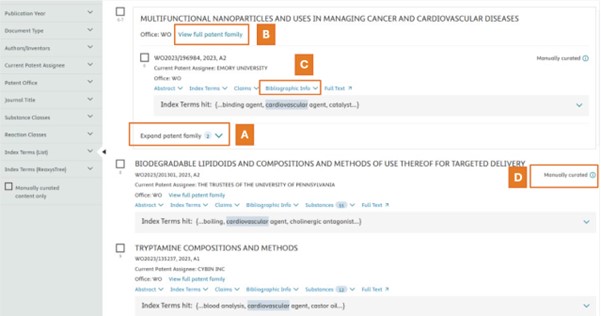
To learn more about patent families, please visit Reaxys Support Center
Find more target information in journal articles
Reaxys now automatically annotates target names in journal articles, making them searchable as ‘target keywords’. This extends to our existing deep indexing of target information from patents, where detailed information about the drug target from patent document is extracted.
As a result, you now can easily find more relevant literature for primary targets (genes or proteins) in journal articles, next to existing target keywords extracted from patents. You'll find more documents by searching for both the exact target name and relevant synonyms, providing a comprehensive result set.
For example,
A quick search for ‘retinoid x receptor’ returns all the document results where ‘retinoid x receptor’ and its synonyms are mentioned in the title, abstract, or keywords. Thanks to the new target keyword information, an article can now be found even if the target is not mentioned in the title or abstract.
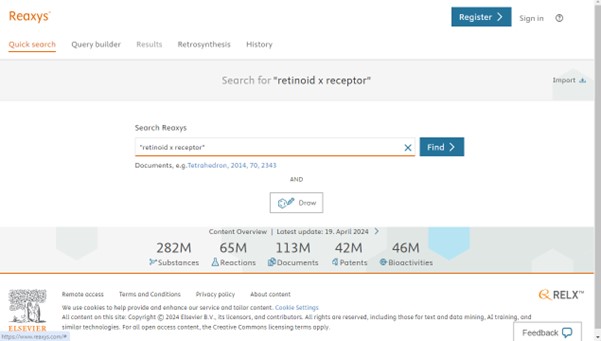
You can click on ‘Edit in Query Builder’ on the document results to see which synonyms were searched for by the enriched keyword search as below:
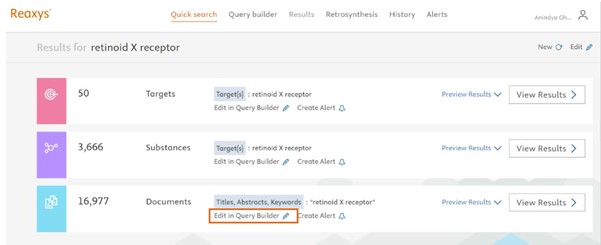

Below is the list of results produced by this search with the target keywords listed below each document result.
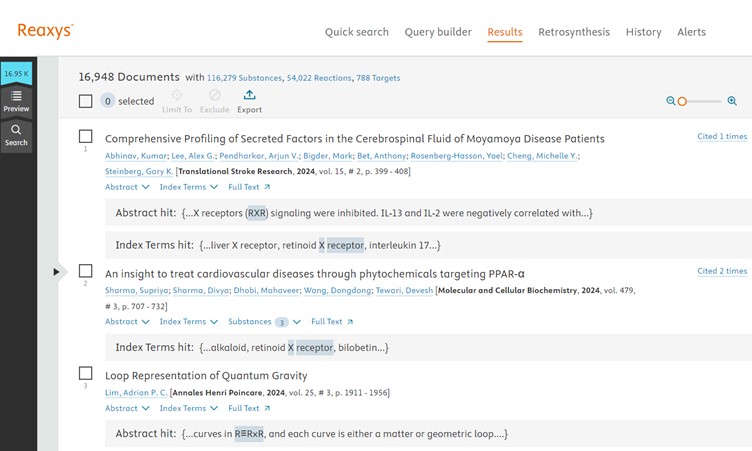
New Author Name search now considers name variations
Scientists can now easily find relevant information by specific researchers with improved literature discoverability. The Quick Search feature accounts for author name variations, enhancing search efficiency for a more complete experience.
Before: searching for the author's name Khuram Nasir only considered the entered name and no additional variations of that author's name.
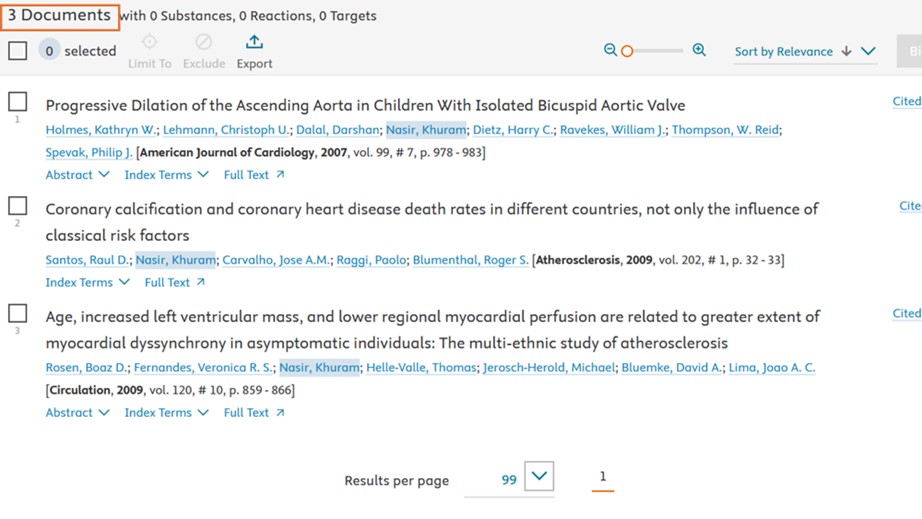
After: same name Khuram Nasir, now considers name variations (Khurram Nasir, Nasir, K.) resulting in a more complete result set.
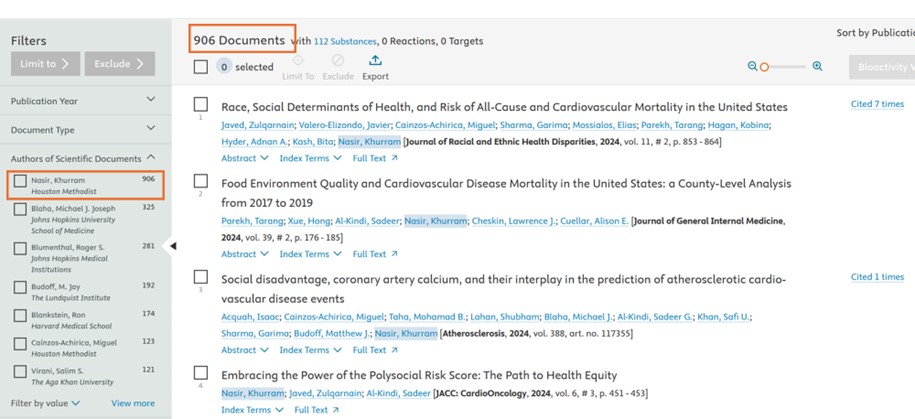
New Author Name search supported by new filters
For supporting discoverability of scientific literature by specific authors, user-friendly filters have been introduced. The filters include Author of Scientific Documents, Affiliation, and Inventor of Patents, offering accuracy across different document types. For the Authors of Scientific Documents Filter, up to 4 name variations will be shown for each author. The search algorithm considers all possibilities based on their publications, with a display limit of 4 variations for clarity.
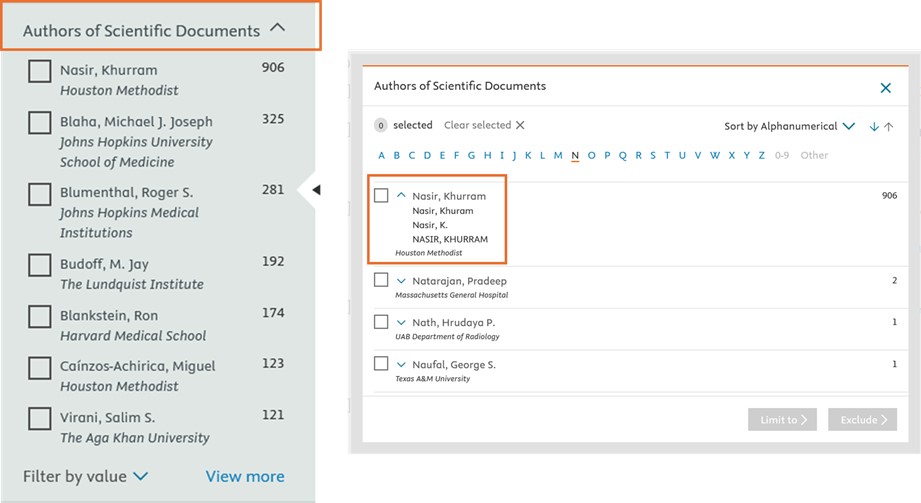
Affiliations and Inventor of patents filter:
Affiliations filter will allow refinement to authors from a specific institution of interest.
Inventor of Patents to identify any scientist who is an inventor on a patent.
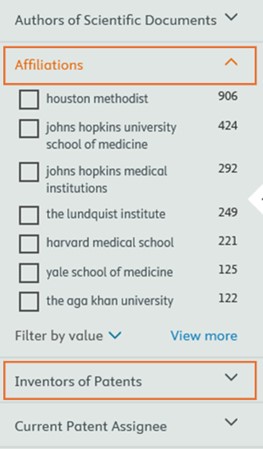
Build more precise queries via Query builder
Additionally new querylets have been added to support building more complex and precise queries. The new queryets are:
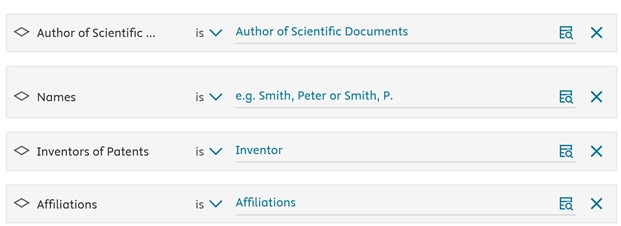
- Names - which consider both Author of Scientific Documents and Inventor of Patents. For the Author of scientific documents name synonyms will also be considered
- Author of scientific documents - authors only. name synonyms will also be considered
- Inventors of Patents - Inventors only. Name synonyms will not be considered
- Affiliations - publishing authors institution (academic or corporate entity)
All the above querylets are now available to use and complement the existing bibliographic querylets which already existed within Query Builder.
Did we answer your question?
Related answers
Recently viewed answers
Functionality disabled due to your cookie preferences